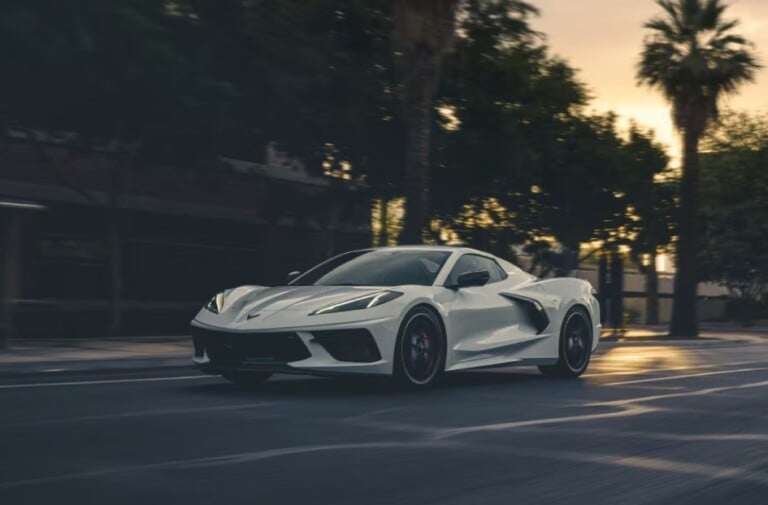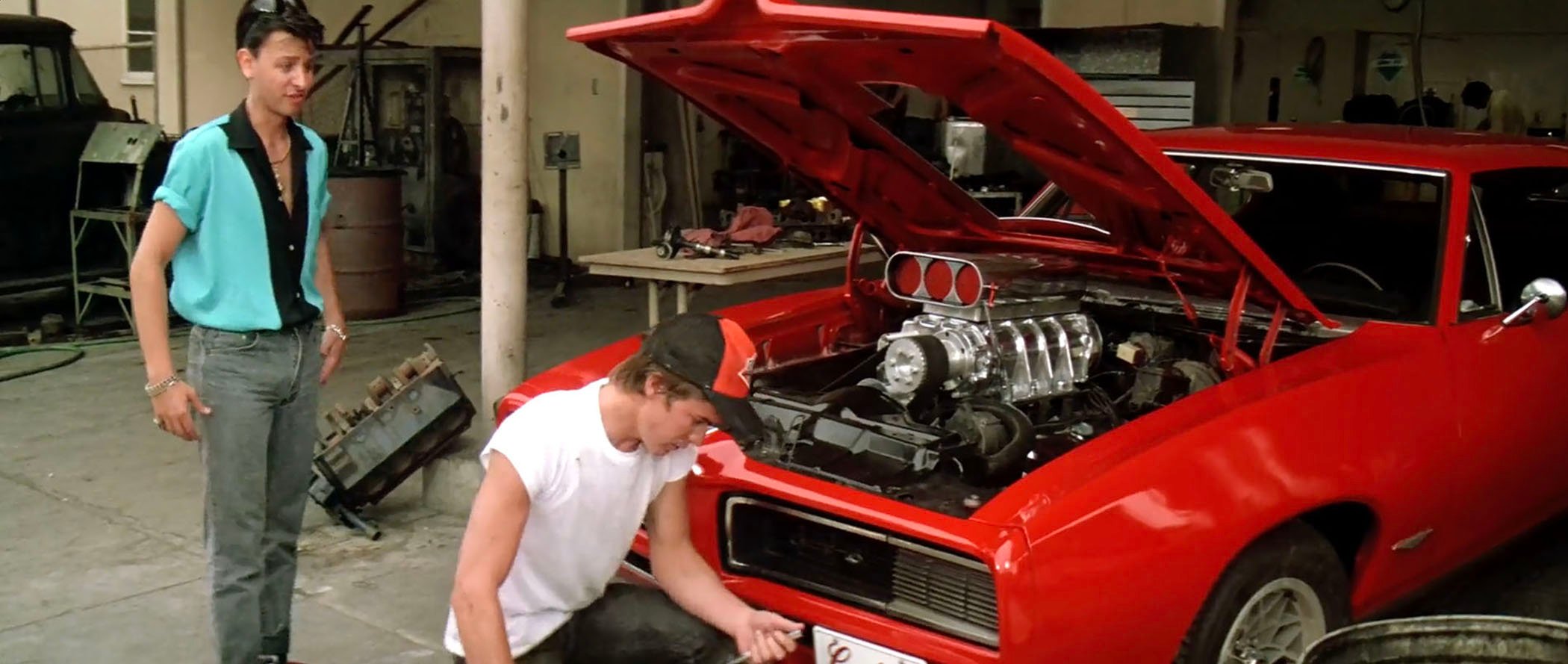In the last installment of this series, we established what we wanted to test and set a baseline with our 347 Windsor small-block Ford engine. With a stout 453.8 horsepower and 468 pound-feet of torque, the bar was set pretty high. The next step in the process was to pull off the 190cc Edelbrock Performer RPM Windsor intake and cylinder heads, and swap on the 190cc Edelbrock Performer RPM Cleveland cylinder heads and intake. But first, we had to do a little work.
A Tale Of Two Cities — Cleveland Vs. Windsor
Since our quest here is to compare cylinder heads, let’s discuss the differences. Of course please keep in mind that there are some aftermarket cylinder heads which offer some extensive upgrades over stock configurations. To help mitigate those differences, and keep the test as apples-to-apples as possible, we will be using the same model aftermarket aluminum heads, both of which are based on stock replacements.
The Windsor cylinder head has a valve angle of 20 degrees. If you place the deck of the cylinder head on a table the valve angle would be tilted 20 degrees from the horizontal plane. The intake and exhaust valves share the same angle. This is known as an inline valve layout. As for the Cleveland head, this is where everything changes. If you place the deck surface of the cylinder head on a horizontal plane the intake valve angle will be at 9.5 degrees with a 3.75 degree side angle — or cant as it’s often referred to. The exhaust valve is placed in the chamber at an angle of around 8 degrees. This is called a “canted valve” design.
You can see the Cleveland cylinder head's altered valve arrangement. ON the left, you can see the canted valve angles, while on the right, you can see how the larger 2.05-inch intake valve fits neatly into the chamber because of those valve angles.
For the cylinder heads, castings for both the Windsor and Cleveland were provided by Edelbrock and are listed as the Performer RPM series. Even though the cylinder heads share the same intake port volume at 190cc and the same combustion chamber volume at 60cc, there are some differences that need to be examined.
From the chart you can see where the intake ports are the same along with the combustion chambers and the flow numbers look similar. Note the intake valve sizes are different. This is due to the way the chamber is twisted. The Cleveland can fit a larger intake valve in the chamber thanks to the non-inline geometry.

As you can see in this chart, according to Edelbrock’s SuperFlow SF-1020 flow bench, the Windsor head flows better at low lift on the intake side, and better across the board on the exhaust. However, there’s a reason we don’t race flow bench results…
This enables the chamber to be more efficient and makes the valves more flat to the piston. The spark plugs are in a better location, nestled between the valves and to the center of the bore. While the port flow is similar you can see that the mid-lift and higher flow numbers on the Intake of the Cleveland are better than the Windsor. and the exhaust of the Cleveland is slightly less than that of the Windsor. These differences in flow-bench performance are due to the differences in port shapes and valve angles.
This is why we wonder, if as many variables as possible are eliminated, does the canted-valve design of the Cleveland head have an inherent benefit over a Windsor?
Here, you can see molds taken of the two intake ports: Windsor on the left and Cleveland on the right. Both of these intake port designs measure 190cc of volume, but other than that measurement, you can see they aren't very similar at all.
Clevor Rising
The modifications are minimal to install Cleveland heads on a Windsor block. The water passages in the cylinder heads need to be altered and you will have to use different pistons due to the valve arrangement, and a Cleveland-specific intake manifold for the port shapes.
The process is simple and requires the use of a 1/2-inch NPT tap. You simply tap the round water passages that are near the intake manifold mounting surface. After tapping the water passages we inserted half-inch aluminum pipe plugs to where they were just slightly above the deck. Then we surfaced the cylinder head until the pipe plugs were flush with the deck surface of the cylinder head. You then drill an opening to match the Windsor coolant passage location, which is conveniently spot drilled for you by Edelbrock. When installing the Cleveland cylinder heads you still use the Cleveland head gasket on the Windsor block.
With the Cleveland Performer RPM heads ready to bolt on there were a few other changes to be made. We pulled apart the rotating assembly and swapped the pistons to a set of MAHLE Motorsports billet pieces. While a shelf-stock Cleveland piston design exists, there was a shortage of forgings available at the time. In the interest of expediency, MAHLE’s design engineers opted for making a billet version of the piston for this application. Make sure to stay tuned, as we’ll be diving into the difference between forged and billet pistons, as this was a perfect opportunity.

On the left is the standard 347 Windsor piston from MAHLE. On the right is a the Cleveland variant, made specifically for an 8.2-inch deck Clevor application.
Other than compression height to match the 5.400-inch-long rod and 3.400-inch stroke, the Cleveland piston was the same as what would be used in a shelf-stock 351 Cleveland piston, for a fair comparison. The ring pack is the same 1.0mm, 1.0mm, 2.0mm as the Windsor used, so no sneaky advantages (or disadvantages) there, and the combination has the same 10:1 compression ratio as the Windsor combination.
Like the Windsor Performer RPM Cylinder heads, the Cleveland variant has a 190cc intake runner, 90cc exhaust runner — both of which are based on the 2V Cleveland ports — and a 60cc combustion chamber. However, unlike the Windsor version, the intake valve measures in at 2.050 inches in diameter, with a 1.600-inch exhaust valve.
With the altered valve angles, comes the need for a completely new valvetrain. While we could have run the same Windsor camshaft in both tests, the engineers at COMP Cams decided it would be better to make a few small changes to the Cleveland camshaft in order to properly match the cylinder head flow, the same way the Windsor camshaft was. For the test, the cam specs had slightly (.009 inch) more lift on the intake, along with four degrees additional duration (.572 inch; 222 degrees at .050 inch) and slightly less lift (-.001 inch) and the same four degrees of additional duration (.569 inch; 230 degrees at .050 inch).

These two cams have remarkably similar specs. The one for the Cleveland-headed combo has slightly more duration (four degrees at .050 inch of lift) on both the intake and exhaust lobes.
We reused the same COMP Cams link-bar Retro-Fit hydraulic roller lifters. However, the pushrod length between the two combinations was different. We used the same 4130 chromoly steel, 5/16-inch-diameter, .080-inch wall-thickness hardened pushrods, except in a longer 6.850-inch length. For the rocker arms, we again tried to keep things as close as possible. COMP sent the same Magnum series roller-rocker arms, but designed for the Cleveland cylinder head — that is for a 7/16-inch stud and 1.72:1 ratio. Like the Windsor Performer RPM cylinder heads, the Cleveland variants come pre-equipped with valve springs for hydraulic roller cams of up to .575 inch of lift.
This combination requires a very specific manifold — a Cleveland pattern, but for an 8.2-inch-deck engine. Luckily, Edelbrock makes that exact manifold in the Performer RPM line of intakes, called the “Performer RPM E-Boss 302 Intake Manifold.” Specifically designed to replicate BOSS 302 combinations (or replace a BOSS 302 manifold, if, say, you needed to send your kids to college and decided to sell the original intake manifold).

The exhaust ports of the Cleveland heads are 50-percent larger than the Windsor’s in the Performer RPM lineup (90cc vs 60cc). As you can see, they also take a different manifold flange.
Putting The Pedal To The Metal
Once the engine was back together, we went back to the dyno to see what our numbers looked like. As before, the engine was given proper break-in time and we focused on the ignition timing. The Clevor engine seemed to like a total ignition timing of 30 degrees compared to the 32 degrees the Windsor was happiest with. That seems to indicate that the Cleveland chamber was working better than the Windsor.
As in the previous test, we fitted the 800cfm Edelbrock AVS2, and just like in the Windsor test, the carb’s out-of-the-box calibration was solid. It performed well throughout the RPM range, quelling your author’s original concerns about the AVS line of carbs. A set of Cleveland-pattern long-tube dyno headers, very similar to those used in the Windsor, were bolted to the heads to get the spent gasses out efficiently.
Once the testing was complete, we pored over the data. The first thing we noticed was that the Clevor combination wanted more RPM than the 5,600 we stopped the test at. However, the peak numbers show that the Clevor made a significant amount of difference. While there was only 11 lb-ft difference at the torque peak, there was almost 40 more horsepower at the Clevor’s peak — and the graph was still rising.

There’s no question here, the Cleveland head outperformed the Windsor head across the board, especially up top, with a 40-horsepower gain. Likely there’s even more in the Clevor combination, just by spinning it a little higher.
However, the full story becomes much more apparent once you look at the full graphs. The Clevor not only made more power everywhere under the curve (the cylinder head flow charts might have led you to believe differently), but looking at where it made peak power, it really likes RPM more than the Windsor-headed combo does.
So, what does that mean? Well, it’s obvious that as equal as we tried to keep everything, the Cleveland’s port shape, chamber design, and valve arrangement do still carry an inherent benefit over the Windsor’s inline-valve design. However, that doesn’t mean that everything should be a Clevor build going forward. Besides the fact that there are a multitude of Windsor cylinder heads offered to achieve the same goals (Edelbrock Victor Jr., for example), there is the fact that a Clevor setup — whether 8.2-deck or 9.5-deck — will always be inherently intake-manifold limited. A Windsor combination has the benefit of a much, much wider variety of intake manifolds to choose from.
However the proof of the pudding is in the eating, and the Cleveland cylinder head, like for like, still outperforms the Windsor cylinder head, even in the modern age. Plus, there is a cool factor about having the Clevor setup under the hood, just like the old BOSS 302s.























